If you think this Hemi-powered Superbird replica is impressive, wait until you hear the story behind how it came to be!
Picture this: the year is 1978 and your dad, who bought a Superbird a few years ago, is looking to replace it with something less garish. Despite the Superbird’s Nascar success, with the car’s big wings, angular front end, and the current price of gas, the car is unpopular with most buyers.

So, instead of taking the big loss on the purchase price — they did cost $4298, or about $1K more than other muscle cars, when new — your dad decides to offer the car to you. Being a Nascar fan and an apprentice mechanic, you jump at the chance to own the car. But, of course, for you to be happy with it, it’d need a bit of work.
Not long after buying the Superbird, you drop the ride height, bolt on some Nascar-spec D-window rims, and call on a few mates involved with Nascar itself to help with some chassis and front-suspension mods. Before you know it, you’re tearing up the streets in a car like no other — a hit with the lads and ladies alike.
This dream is sort of the concept behind the build of Andrew Sinclair’s 1970 Superbird replica. Having grown up with a dad who was well known in offshore powerboat-racing circles, Andrew’s had a love of high-performance vehicles for as long as he can remember. This love has grown over the years to see him compete in various motorsport disciplines, most notably Central Muscle Cars, in which he raced against plenty of his equally horsepower-crazed family members.
It had always been a dream of Andrew’s to own a 1970 Plymouth Superbird. But, despite the cars being unbeatable in the one year they were allowed in competition before being banned, the reality is that they’re still an old muscle car and drive like one. While their wild bodywork was designed using wind-tunnel testing, and the cars were built to be stable at speeds of more than 150mph, they were not really built to stop or turn.

For years, Andrew would tell family, friends, and anyone who’d listen about his dream of owning such a car, and much time was spent discussing the concept in detail with Mike ‘Bic’ Anderson, a good friend and the proprietor of Sonic Race and Machine. With Bic taking care of the engineering side of the Sinclair family’s race cars, many a beer was consumed trackside at events, where the usual beer talk about the proposed winged wonder would take place.
With Andrew putting plenty of hours into the family business, as well as helping out with his dad Keith’s Cuda race car and other family commitments, the dream of owning such a car had to wait. The aspiration was put even further on the back-burner when he made the leap to buy the business off Keith, a move that took up more of his resources.
However, a day before Beach Hop this year, something massive and unexpected happened to Andrew’s dream.
When Keith requested that family members be at his house at a certain time, Andrew was fearing the worst. On arrival, though, those fears were allayed when Keith dragged the family out to the shed, telling them to wait outside while he ventured in. When an angry-sounding motor could be heard firing into life within, the family looked at one another in bemusement, wondering what on earth it was that Keith had bought himself. When the door rose to reveal a blue Superbird, they were blown away. Sure, Keith’s a Mopar fan and all, but he’d never let on he was even thinking of buying another car, let alone something so radical.
As Keith turned the engine off, Andrew, who was blown away by what he was seeing, went to congratulate him on his purchase, not to mention applaud him for keeping it so quiet. But, as Keith jumped out, he astounded Andrew by muttering the words, “Happy birthday, son!”
Just like that, Andrew had the key to the car of his dreams — the subject of many a fantasy and discussion was his. Andrew genuinely had no words to describe how stunned he was, as he was simply speechless.

While having your dream car gifted to you is an experience that most of us can only ever imagine, and one that Andrew is to this day overwhelmed and humbled by, what makes it even better is that the car had been built right under his nose, with him oblivious. The conversations that he’d been having with Keith and Bic, when they’d go into specific details on aspects of his dream build, had been intentional, as they had probed him for every last piece of information to ensure that the build would be perfect in Andrew’s eyes.
It was during the construction of Keith’s Cuda that the pair had made the decision to shut Andrew up once and for all. However, after seeing far too many ‘internet darlings’ turn out to be disasters, they’d known that the only way to ensure that it’d be money well spent would be to build the car themselves.
The basis for the build was a 1970 Road Runner sourced from a Texas backyard, where it had been sitting for many years. The hard part wasn’t sourcing the parts required to turn the car from a Road Runner into a Superbird — such as the reproduction spoiler kit and window recess — but keeping the whole thing a secret. With Andrew involved in Keith’s Cuda build, which was taking place at Bic’s at the same time, any phone call from Andrew saying he was on his way resulted in a panic to get the car into the trailer and off down the road to out-of-sight storage. This worked all bar once, when Andrew wanted to check up on the Cuda’s progress at the same time as Bic needed a hand to get the Road Runner across to Rotorua to get it dipped.
“I told Andrew that the Road Runner was for a South Island customer, to be built as a pro-tourer, and Keith was giving me a hand and lending me his trailer so he could have the 383 motor out of it,” says Bic.
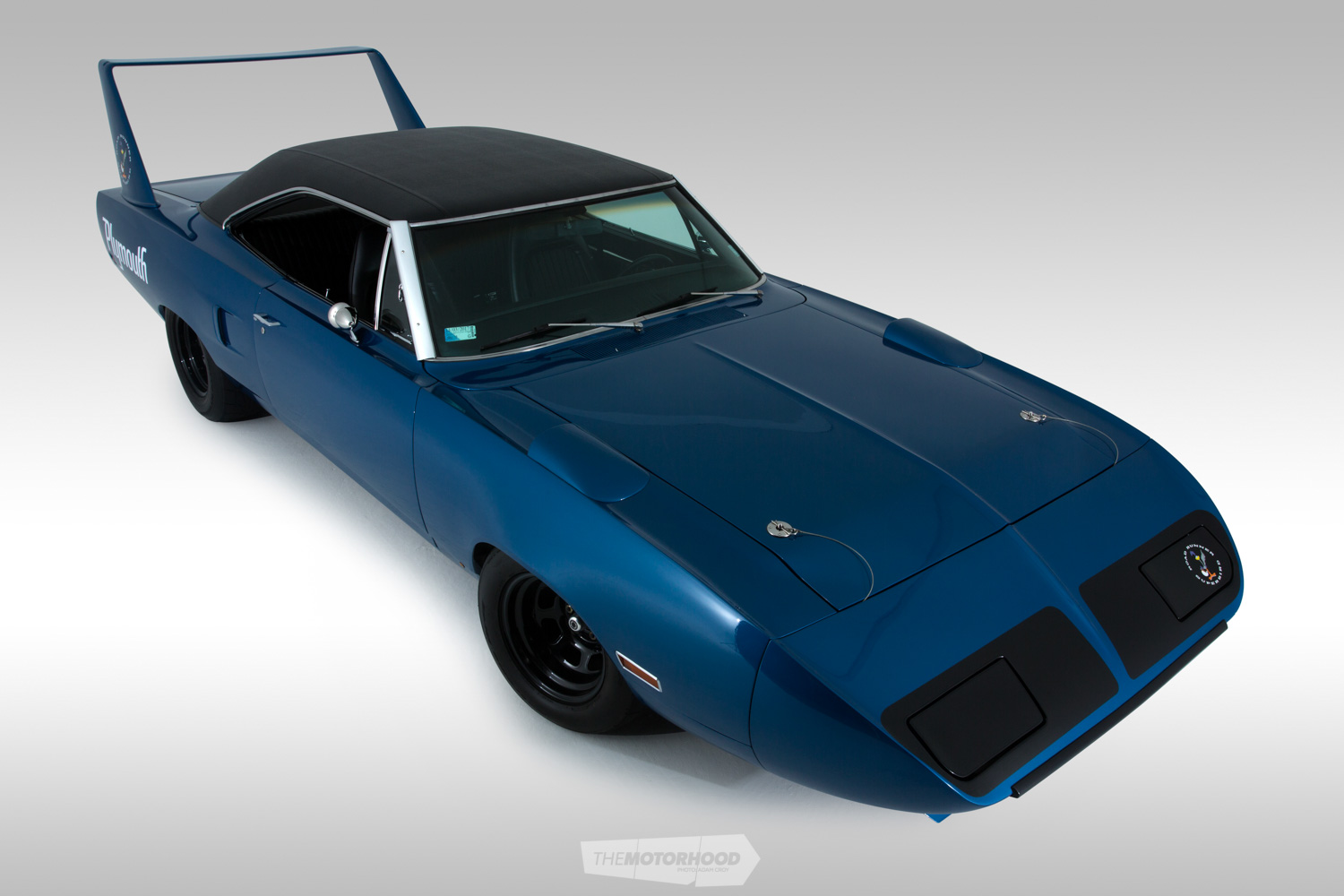
“True to how Plymouth converted the Road Runners into Superbirds back in the day, a complete ’69 Coronet was purchased just to get the mint hood and front fenders required”
Andrew bought the story, and carried on none the wiser, much to Keith’s relief.
Once the car had returned from dipping, Bic set about seam welding and adding various braces to the body, as had been done back in the Nascar days, incorporating a few modern tricks along the way. Included in the fab work were torque tubes and factory-styled ‘Power Pac’ chassis connectors.
To get the car handling as well as Andrew had been saying he would, race-spec torsion bars were added up front and a few geometry changes made to the front A-arms. Down the back, the stock leaf springs were replaced with modified Plymouth Pro Stock items before adjustable Koni shocks were added to finish the package.
To provide trackside spares for the Cuda and Andrew’s wife Mandy’s VK Commodore, as well as to utilize components Bic both knew and trusted, various parts were fitted to the car that could be easily interchanged between the cars. Included in those many cleverly selected items were the Aeromotive fuel pump, race-spec steering box, and Powermaster alternator.
The front brakes required serious thought; not only would the car be running on small 15-inch wheels, but, again, having components that would interchange could come in handy in the future. The calipers Bic managed to squeeze in are the same Wilwood six-piston race items that the Cuda uses, which clamp 12-inch rotors. The rear brake set-up is strictly Superbird, though, with oversize Mopar rear drums being installed onto the aftermarket Strange diff. Inside the Dana 60–style casing is a Truetrac limited-slip head along with 3.7:1 gears, to give the car just the right mix of low-end acceleration and high-speed capability.
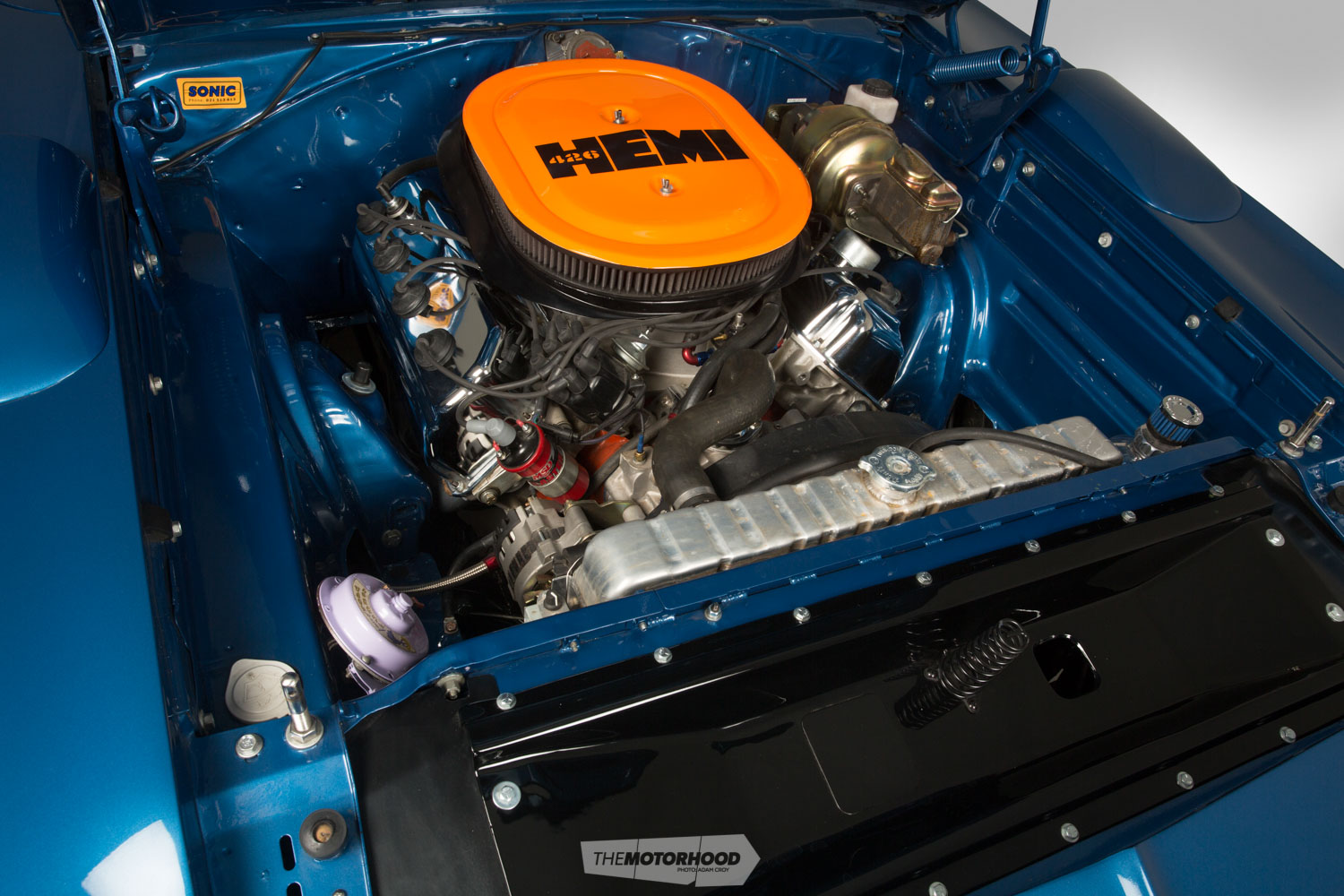
Of course, the crowning glory of a Superbird — be it original or replica — should be what’s under the hood. As you can imagine, Keith, a Hemi owner himself, knew there was only one option: an almighty Hemi, blessed with no fewer than 472 cubic inches of capacity and built with only the finest of components. Sourced through Bouchillon Performance Engineering in South Carolina, the crate motor has been constructed using a Mopar Performance Siamese-bore block fitted with aluminium Hemi heads. The bottom end has been filled with Scat rods, crank, and pistons, while the aluminium heads wear 2.22-inch inlet and 1.94-inch exhaust valves, along with a plethora of Comp Cams componentry including a custom-specced cam. The result is a dyno-proven 644hp and 558lb·ft — or, for those who know their racing history, about an extra 200hp over the real deal’s advertised output.
Of course, with the original cars being built for high-speed oval racing rather than low-speed road cruising and, as such, having minimal frontal cooling area, the cooling side of the build was hugely important. The solution for the potential problem was to slot in the largest aluminium radiator possible, along with a race-spec water pump and twin electric fans; so far it’s worked a treat. Rumour has it that, unless you can stand in front of the car with it idling and feel air rushing past your legs into the lower grille, the car will have low-speed cooling problems. After a bit of head-scratching by Bic, it was nailed, and you certainly can feel it here.
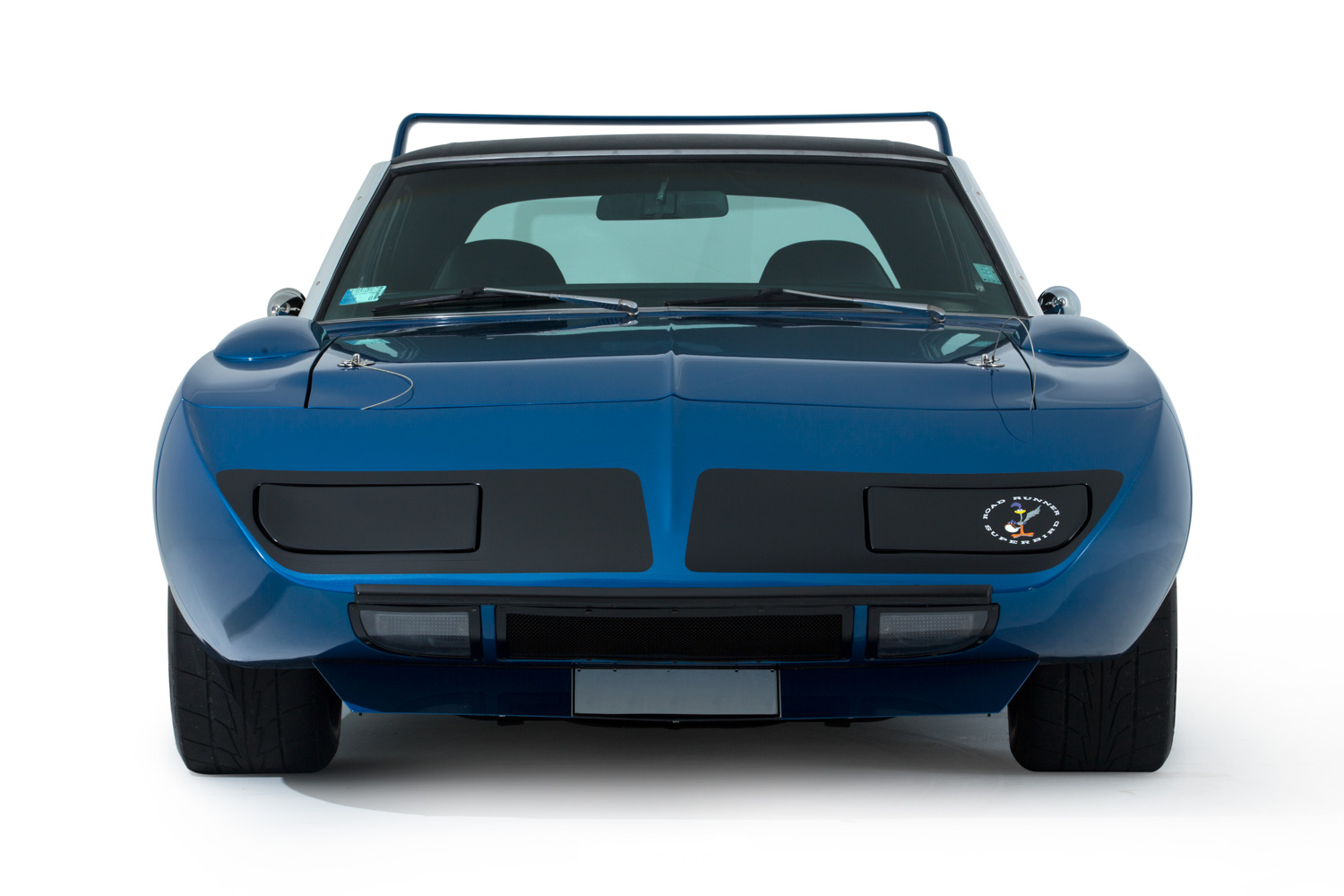
“The only way to test such a high-speed–capable vehicle was on the racetrack … at 120mph”
The fibreglass nose cone behind which the radiator sits was purchased out of America, along with the matching wing, rear window plug, fender scoops, lower front valance, and headlight kit. With the theory being to make the build as genuine as possible, and true to how Plymouth converted the Road Runners into Superbirds back in the day, a complete ’69 Coronet was purchased just to get the mint hood and front fenders required. The hood then got lengthened and the lower forward fenders were modified to blend into the nose, just as Creative Industries, Plymouth’s Superbird assemblers, did in the day.
While the bodywork was being taken care of, the battery was moved to the boot and the engine bay tidied up — not to be hot rodded and made silky smooth but to simply clean up the appearance and make sure the motor itself was the main focus under the hood.
The team at Greerton Panel and Paint Repairs was then tasked with fitting new rear quarters and sills before coating the now radically changed Road Runner in layers of DeBeer Mopar B5 Blue.
With the secret build rapidly coming together, Matt at Sparked Auto Electrix in Matamata was called upon for the next crucial stage: wiring. Essentially, the task involved replacing what the factory provided to include a host of MSD ignition gear, a new Vintage Air heater unit, an electric fuel pump, and a Phoenix Audio stereo.
With both Keith and Bic being of the opinion that, with a build of this magnitude, the risk of teething problems was high, a decent shakedown was organized before the gifting of the car could occur. The only way to test such a high-performance and high-speed–capable vehicle was on the racetrack, so it was at Bruce McLaren Motorsport Park in Taupo that the brakes, gearbox, and diff were bedded in and the 275/50R15 and 275/60R15 Nitto 200-miles-per-hour-rated tyres scrubbed. There, the car could safely be run up to 120-plus miles per hour to make sure there were no high-speed vibrations or handling issues.
The deadline of getting the car certified, complied, and ready in time for Repco Beach Hop 16 was fast approaching — fortunately, the lads had convinced Andrew to take some time off work to attend the event. Little did he know that they’d already entered the car on his behalf, which, at that stage, he still didn’t have any clue he even owned.
If you saw Andrew and the car at Beach Hop, you’ll now fully understand what that stupid grin on his face was all about. Sure, driving a Hemi-powered Superbird will do that on its own, but having your dream car built with none of the stresses involved takes things to a whole new level. Andrew’s one hell of a lucky guy, and he knows it!
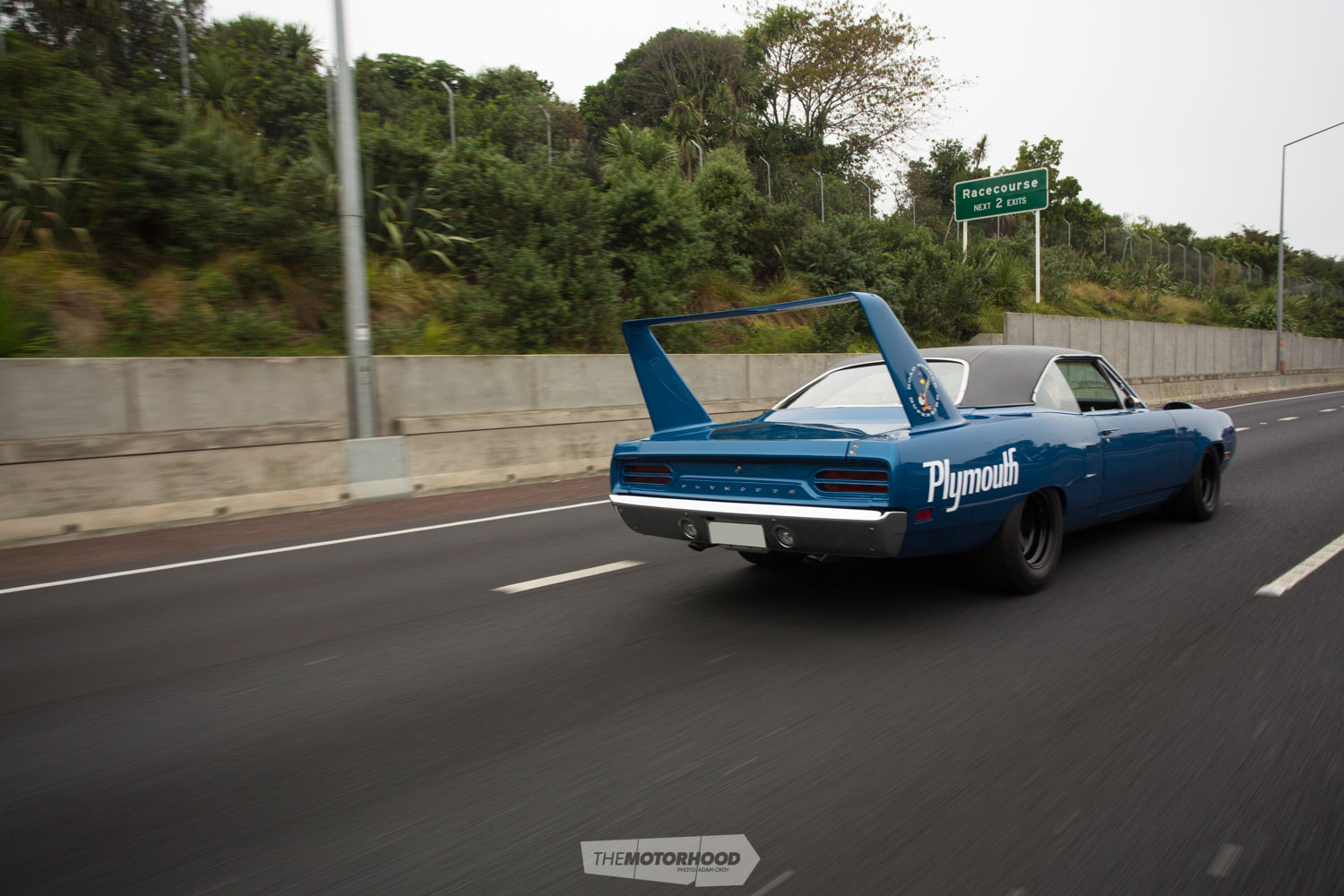
Andrew Sinclair
Age: 50 plus
Occupation: Company director
Previously owned cars: Mazda RX-2, XB ute, HSV GTS, VK Commodore race cars (current), VH Valiant Charger (current)
Dream car: This one, obviously, but a genuine Hemi Bird would be very cool as well
Why the Superbird? Firstly, I love the history of these winged cars, with the race teams being the driving force behind the cars being sold to the general public. Secondly, the nose and the wing are so brutal and in your face that they become beautiful, and, thirdly, who wouldn’t want a car designed to run at 200mph with ease?
Build time: Two years — 1400-plus hours
Length of ownership: Read the article
Andrew thanks: Keith Sinclair; Bic at Sonic Race and Machine; Craig, Joel, and Zac at Greerton Panel and Paint Repairs; Matt at Sparked Auto Electrix; Tim at ProCoat
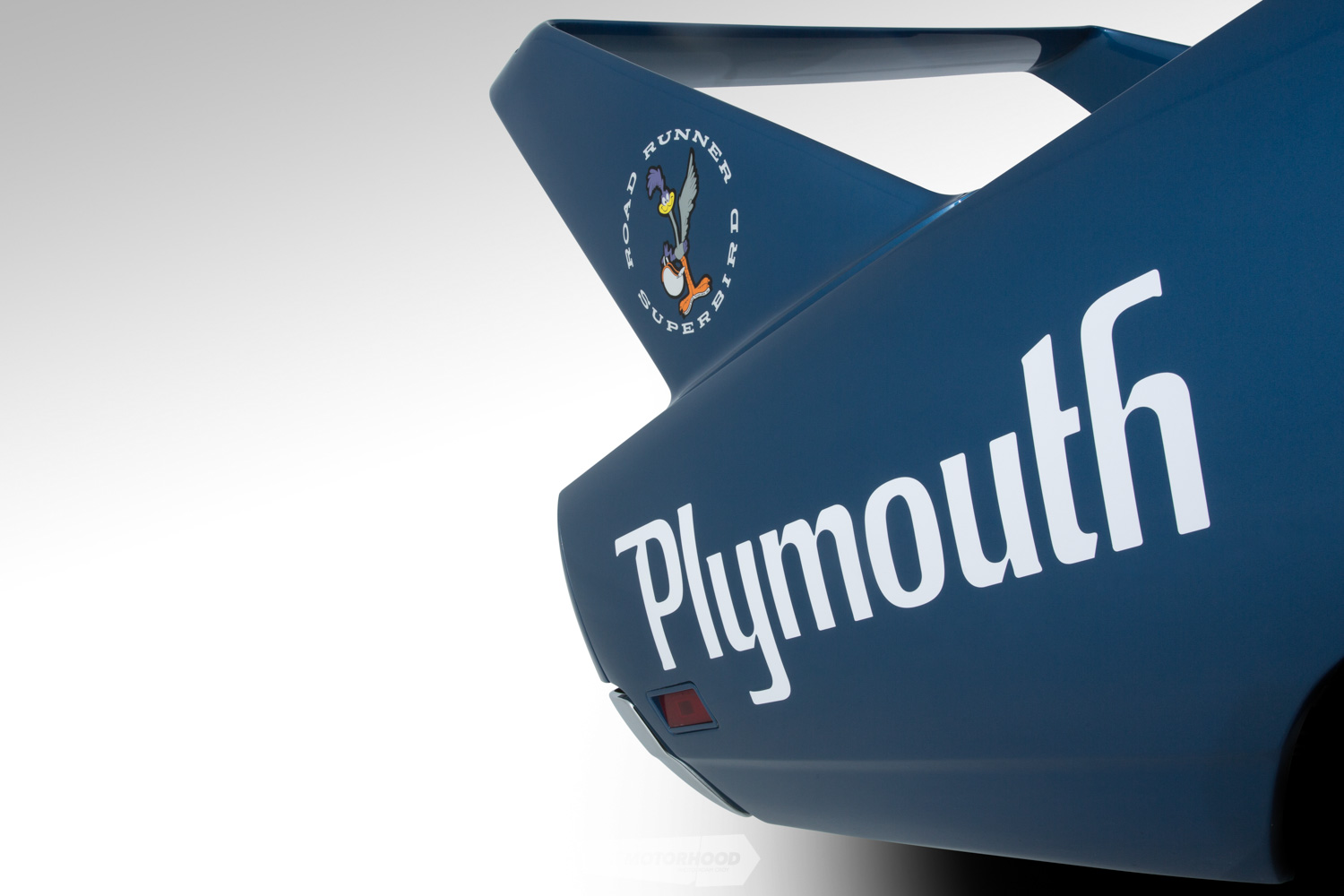
1970 Plymouth Superbird (replica)
Engine: 472ci Hemi, Mopar Performance Siamese-bore block, 4.250-inch bore, Scat 4340 forged 4.150-inch-stroke crankshaft, Scat 4340 H-beam rods, Diamond forged pistons, 10:1 static compression ratio, aluminium Hemi heads, 2.22-inch inlet valves, 1.94-inch exhaust valves, Mahle pushrods, Comp Cams hydraulic camshaft, Comp Cams roller rockers, double-roller timing chain, Mopar oil pan, twin four-barrel manifold, twin 600cfm Holley carburettors, MSD 6AL ignition, twin three-inch exhausts, SpinTech mufflers, custom alloy radiator, electric water pump
Driveline: Tremec TKO 600 five-speed gearbox, heavy-duty rebuilt internals, single-plate clutch, Strange Dana 60 diff housing, Truetrac LSD, 3.7:1 final-drive ratio
Suspension: Race torsion bars, race sway bar, modified upper arms, Koni adjustable shocks, Pro Stock rear leaves
Brakes: Wilwood six-piston front calipers, 12-inch front rotors, oversize rear drums, steel lines
Wheels/Tyres: 15×10-inch Aero race-spec wheels, 275/50R15 and 275/60R15 Z-rated Nitto tyres
Exterior: Coronet front guards, Coronet bonnet, aftermarket nose cone, aftermarket spoiler, aftermarket rear window plug, DeBeer Mopar B5 Blue paint
Chassis: ‘Power Pac’ chassis connectors and torque boxes
Interior: Refurbished factory dash, Phoenix Audio head unit
Performance: 644hp, 558lb·ft










